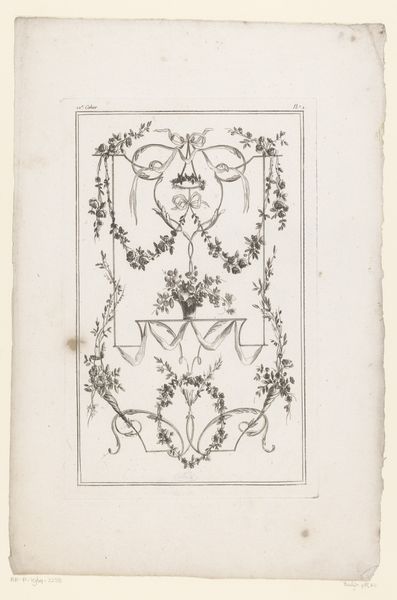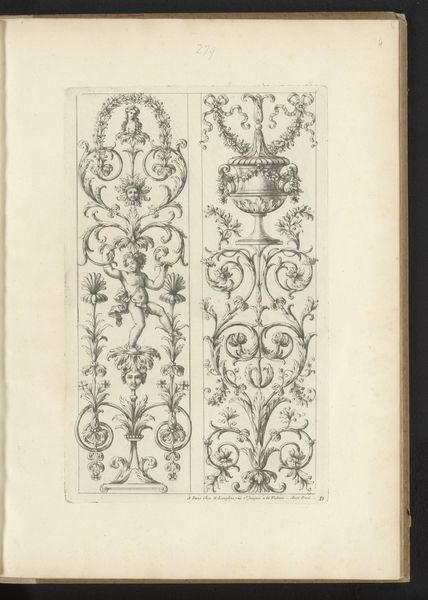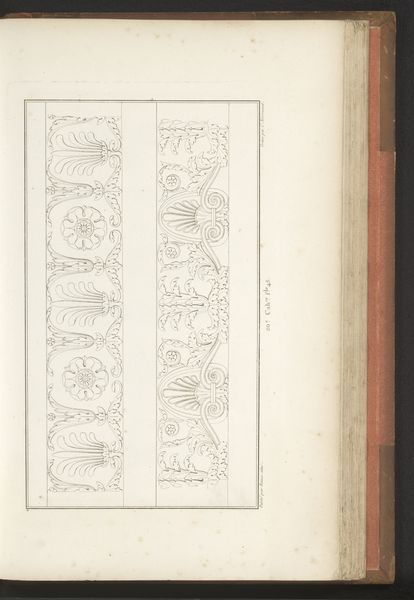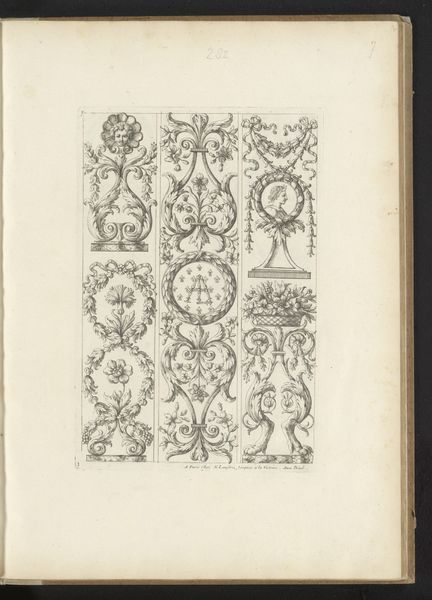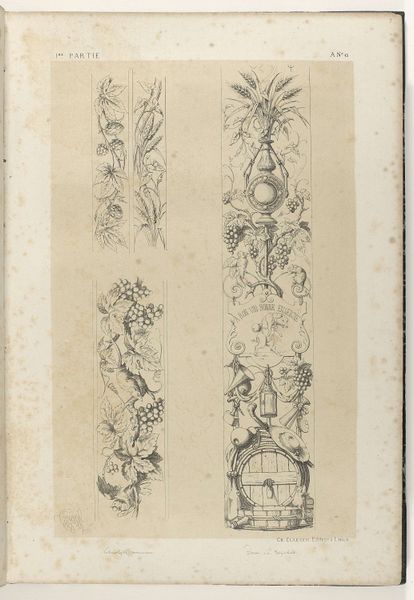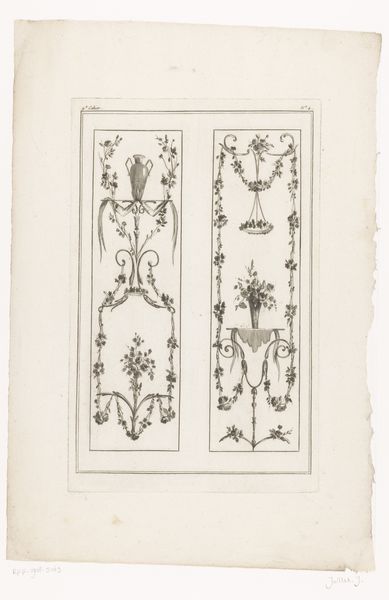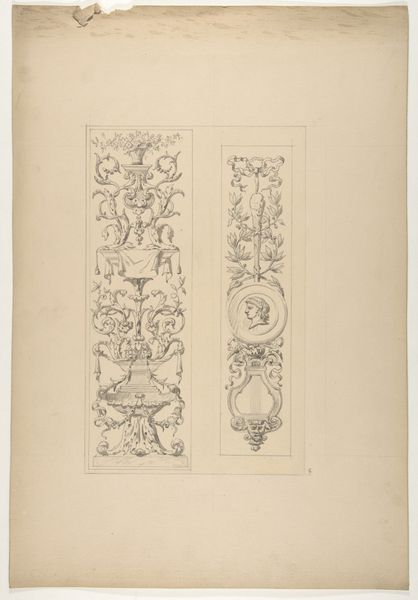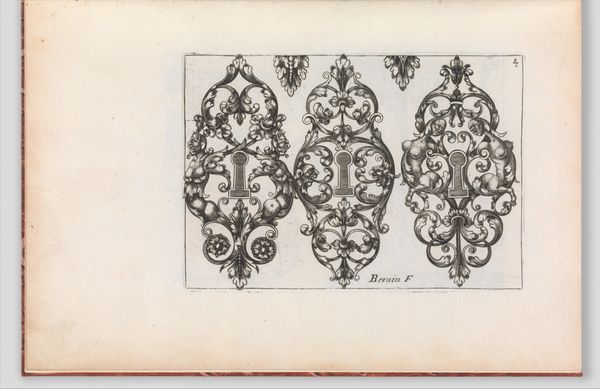
drawing, graphic-art, print, ink
#
drawing
#
graphic-art
#
baroque
# print
#
old engraving style
#
ink
Dimensions: height 265 mm, width 176 mm
Copyright: Rijks Museum: Open Domain
Curator: I'm immediately struck by the sheer intricacy. Look at these lines, the delicacy of the engraving—it's mesmerizing. Editor: We're looking at “Kandelabermotieven met bloemranken,” or Candelabrum Motifs with Floral Tendrils, an ink drawing rendered between 1650 and 1703. It’s Baroque in style, and the artist is Paul Androuet Ducerceau. It is currently held in the Rijksmuseum. Curator: Baroque, absolutely. There’s an undeniable tension here, isn’t there? A play between restraint and almost riotous ornamentation. Each motif feels both contained and on the verge of overflowing. The careful control juxtaposed with the explosive forms—is this artist subtly commenting on societal control? Editor: Well, it's a graphic art print, part of a broader trend of disseminating designs for artisans and craftsmen. Prints like these, circulated widely, dictated taste and fueled consumer culture in a rapidly expanding economy, solidifying power in the hands of a select elite who determined the prevailing style and designs. Consider the floral motifs, symbols often associated with wealth, status, and the exotic, reinforcing class distinctions through aesthetic preference. Curator: That interplay you describe is fascinating when we consider how this artwork functions structurally, how the vertical panels serve almost as modules of visual hierarchy. Notice the precise execution of each symmetrical design, anchored by stylized vases and then bursting forth with these meticulously detailed floral elements. The structure mirrors societal hierarchy—the vases, the foundation, supporting the overflowing decadence. Editor: Absolutely. And Ducerceau, like many artists of his time, navigates this complex social fabric, crafting art that simultaneously serves and perhaps, inadvertently critiques its power structures. This image is a palimpsest of both artistry and social discourse. Curator: So, in a way, it becomes a visual representation of the constraints and performative excesses within the Baroque era's social landscape? Editor: Precisely. Considering the period’s deeply entrenched social structures and the artist's role in that landscape reveals the quiet power within these elegant flourishes. Curator: Looking again, I now appreciate the complexity even more. There is something powerful about analyzing structure when the very essence of baroque art plays with ornamentation, wealth, and authority. Editor: And so it is; seeing beneath the visual appeal adds valuable context and appreciation.
Comments
No comments
Be the first to comment and join the conversation on the ultimate creative platform.

